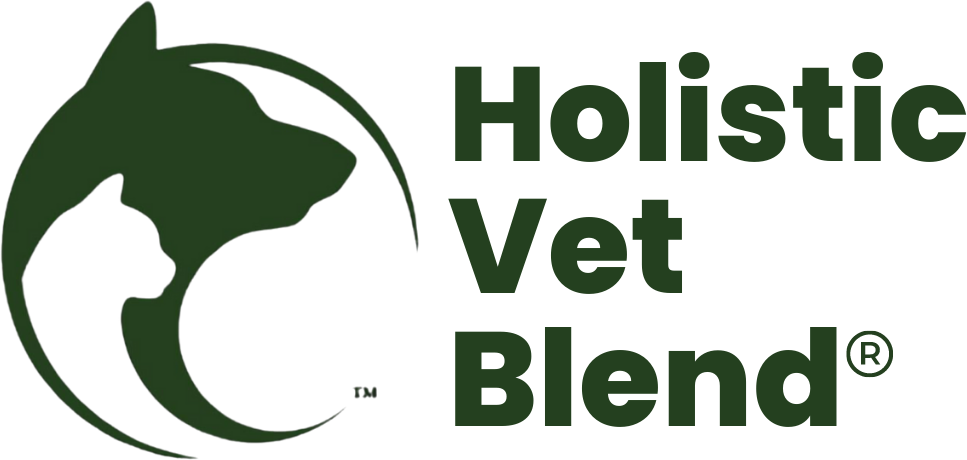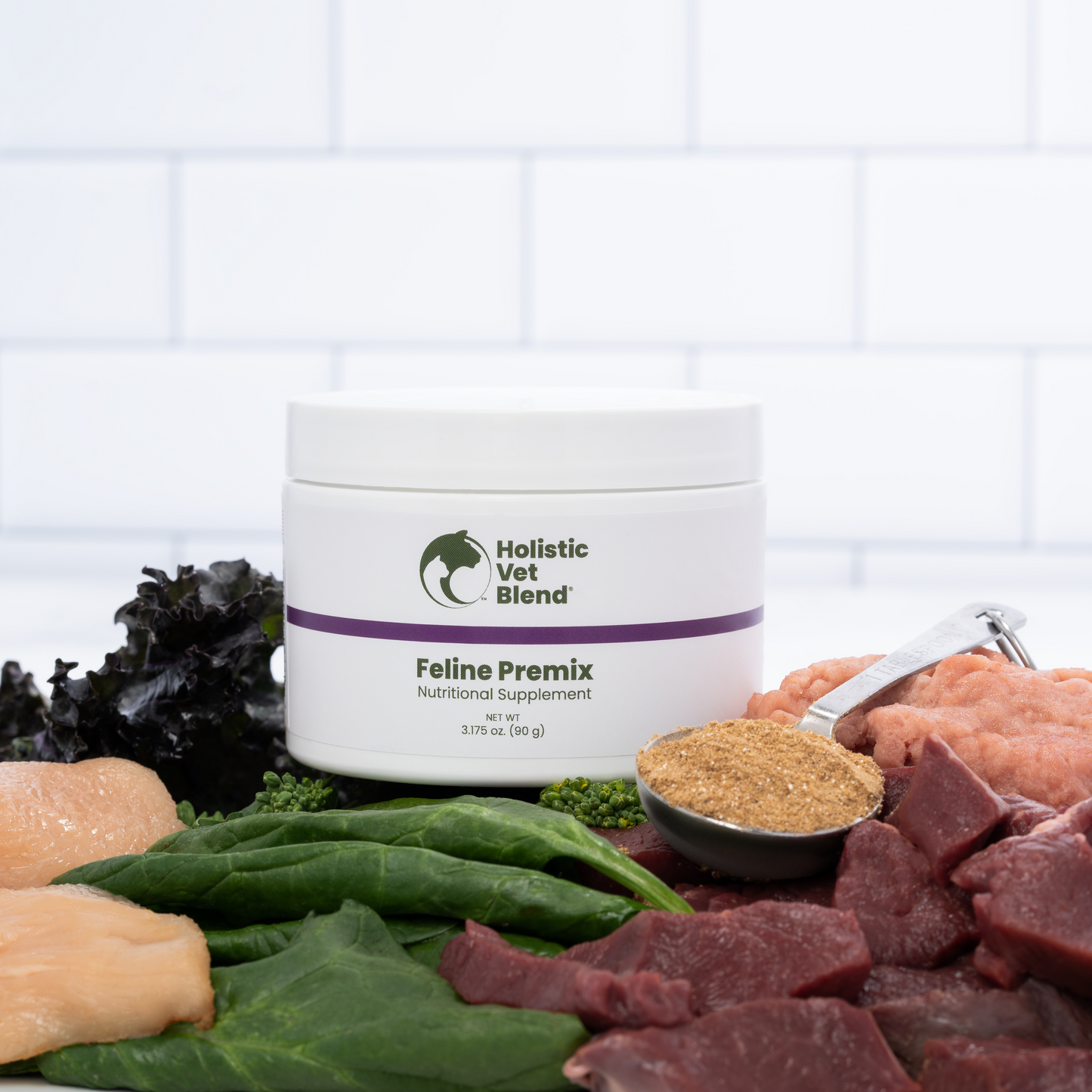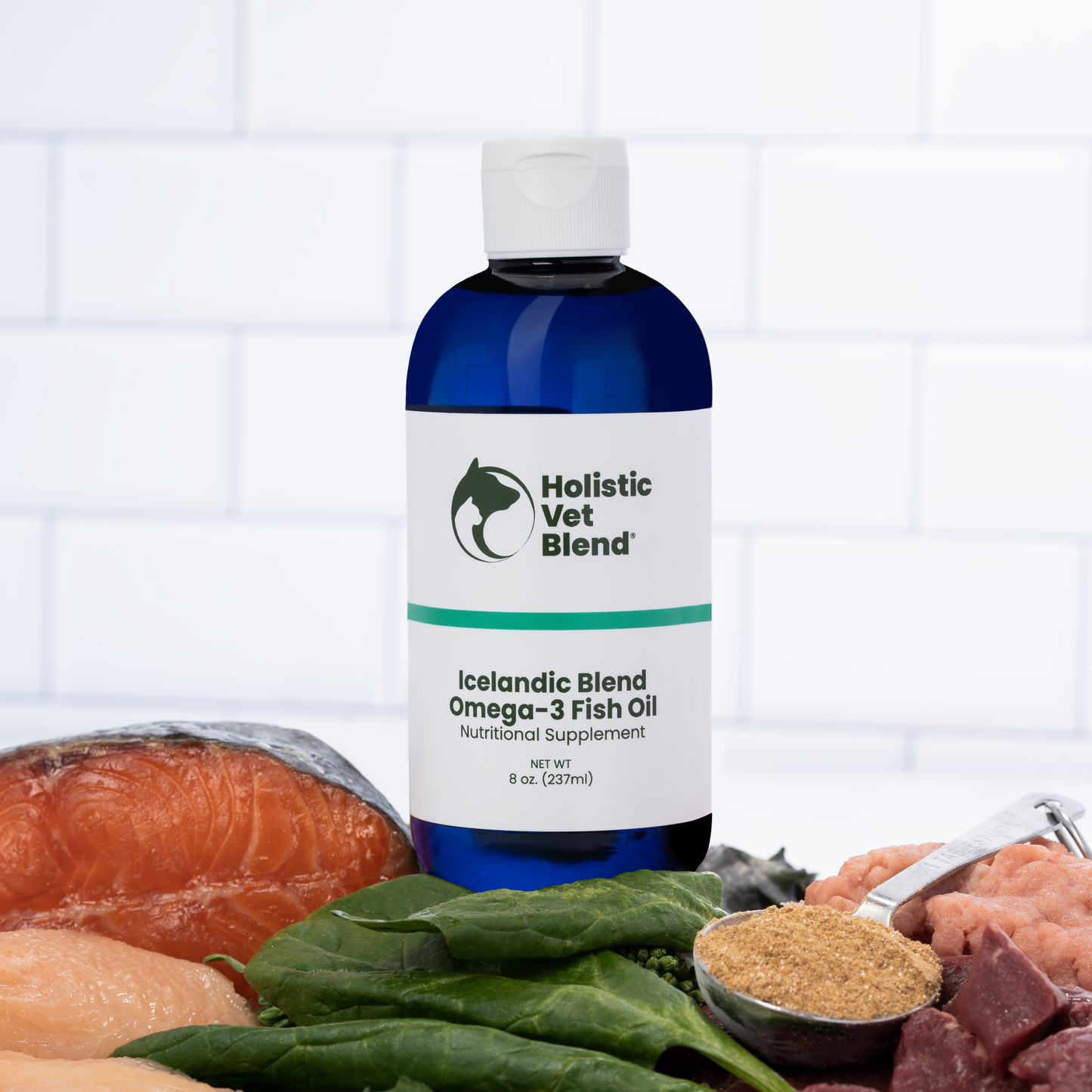
Avian Flu News: Key Highlights
- Avian Influenza has been reported in shelter cats in the past year.
- Dogs seem less susceptible, and there have been some reports of them contracting it from eating a bird that died of it.
- Avian influenza, also known as flu, is a highly contagious disease that primarily affects birds but can also infect many other species, including pets, humans, and many other mammals.
- Avian influenza is spreading rapidly in livestock and wildlife. Thus, it is becoming a global concern.
- Avian influenza can be transmitted from infected birds to humans through direct contact, inhalation of contaminated air, or touching surfaces contaminated with the virus.
- Pets can contract the virus by contacting dead birds or raw meat from infected animals.
- While the risk of avian influenza to the general public is low, it is important to take preventive measures such as avoiding contact with sick or dead birds and practicing good hygiene.
- The outbreak of avian influenza in cattle in the United States has raised concerns, but there is currently no evidence of widespread transmission to humans.
- While things are being sorted out it is a good idea to avoid raw feeding of potentially infected birds especially.
Introduction

Avian influenza, also known as bird flu, is a highly contagious disease caused by the avian influenza Type A virus. While the disease primarily affects birds, it can also infect humans and has the potential to cause severe illness. In recent years, there have been outbreaks of avian influenza in various parts of the world, raising concerns about its impact on public health.
Avian influenza can be divided into two categories: low pathogenicity avian influenza (LPAI) and high pathogenicity avian influenza (HPAI). LPAI viruses usually cause no signs of disease or mild illness in birds, while HPAI viruses can cause severe disease and are associated with high mortality rates in chickens. Some strains of avian influenza, such as H5N1, have the potential to mutate into highly pathogenic variants, increasing the risk of transmission to humans. To address this potential threat, the CDC has released interim recommendations for prevention, monitoring, and public health investigations of HPAI A(H5N1) viruses.
The primary mode of transmission for avian influenza is from bird to bird, with infected birds shedding the virus through bodily fluids. Other birds can become infected through direct contact with infected birds or contaminated surfaces. There have been instances of avian influenza transmission from birds to other animals, including humans, through direct exposure or inhalation of the virus. However, human-to-human transmission is rare and usually occurs only in close and prolonged contact with infected individuals.
In this blog, we will discuss 10 essential facts about avian influenza, including its origin, transmission pathways, risk to domestic pets, impact on humans, safety measures for handling meat and eggs, preventive actions, the role of vaccines, economic impact on the poultry industry, and future developments in fighting the disease.
10 Key Facts You Need to Know About Avian Influenza News

Avian influenza, or bird flu, is a highly contagious disease caused by the avian influenza Type A viruses. Here are 10 key facts you need to know about avian influenza:
- Avian influenza or Bird Flu originated in wild birds but can also infect domestic chickens, ducks, and mammals.
- Avian influenza can spread among birds through direct contact or through contact with surfaces contaminated with the virus. It can also be transmitted to humans through direct exposure or inhalation of the virus.
- While the risk of avian influenza to domestic pets, such as pet birds, is low, infected animals can transmit the virus to other animals.
- Avian influenza is considered a zoonotic disease, meaning it can be transmitted from animals to humans. In humans, it can cause severe illness, including respiratory problems and even death.
- There is still much that is unknown about avian influenza, including its ability to mutate and the factors that contribute to its highly pathogenic nature.
- Safety measures, such as properly handling and cooking meat and eggs, can reduce the risk of avian influenza transmission from infected animals to humans.
- Preventative actions, such as practicing good hygiene, avoiding contact with sick or dead birds, and following disease control measures, can help protect yourself and your pets from avian influenza.
- Vaccines play a crucial role in controlling avian influenza outbreaks in birds and reducing the risk of transmission to humans. However, the development of effective vaccines for all strains of avian influenza remains a challenge.
- The economic impact of avian influenza on the poultry industry can be significant, with outbreaks leading to the destruction of infected birds and trade restrictions on poultry products.
- Ongoing research and developments in fighting avian influenza are focused on improving surveillance and reporting systems, developing more effective vaccines, and understanding the transmission pathways of the virus.
These facts highlight the importance of understanding avian influenza and taking appropriate measures to prevent its spread and protect public health
1. Avian Influenza Causes Death In Shelter Cats In South Korea In The Past Year
Last year, a bird flu outbreak in South Korea significantly impacted a cat shelter, resulting in the death of 38 out of 40 infected cats within a month. Despite being indoor cats, which made direct transmission from wild birds unlikely, investigators discovered that the likely source of infection was their food. The South Korean Ministry of Agriculture, Food and Rural Affairs identified the influenza A(H5N1) virus in cat food products from the shelter, specifically the Balanced Duck and Balanced Chicken brands produced by Nature's Raw in Gimpo. It was found that the company had not adhered to necessary sterilization protocols due to equipment failure starting May 25. Consequently, all potentially contaminated cat food batches were recalled, though 13,200 units had already been distributed to 286 pet owners, who fortunately reported no signs of infection in their pets (1).

2. Do We Know How Shelter Cats Contracted the Virus?
Raw meat was likely the way that cats in South Korea and Poland became infected with the influenza A(H5N1) virus, which strongly supports the idea of not allowing or at least limiting the feeding of raw meat to pets during outbreaks.

3. What are the Symptoms of Avian Influenza in Cats?
In June 2023, Poland reported several unusual cat deaths to the World Health Organization, suspecting the cause to be the highly pathogenic avian influenza. By July 11, tests conducted on 47 samples from 46 cats and one captive caracal revealed that 25 were positive for the H5N1 avian influenza strain. Out of these cases, 14 cats were euthanized, and an additional 11 passed away by June 30. The affected cats exhibited severe symptoms, including difficulty breathing, bloody diarrhea, and neurological issues. Some cats showed rapid health deterioration leading to death. Overall, 20 cats displayed neurological symptoms, 19 had respiratory issues, and 17 suffered from both (2)
4. Can Avian Influenza Spread to Dogs?

There is a report of a dog who became fatally ill after eating chicken remains infected with H5N1 avian influenza, also known as bird flu. When they looked into this further, they found that about a quarter of 629 dogs in a village in central Thailand had antibodies against this virus, which means they likely had been exposed to it at some point(3). According to the US Centers for Disease Control and Prevention, there have been two reported cases of humans contracting the H5N1 virus in the United States, highlighting the importance of taking precautions during bird flu outbreaks.
Researchers wanted to understand if dogs could play a role in spreading the H5N1 virus, especially to humans. They did experiments by infecting dogs with two different strains of the H5N1 virus. The dogs showed mild symptoms like eye inflammation and a slight fever soon after infection, and they only shed the virus from their nose for a short period without it being infectious to others. All dogs developed antibodies quickly, which meant their bodies were fighting off the virus. There wasn't any sign that these dogs could pass on the infection to other dogs or cats. However, it is important to note that H5N1 infections in humans have been known to cause eye infections and other upper respiratory symptoms, so it is important to monitor for these symptoms and seek medical attention if necessary.
Most studies, including those done in Thailand, suggest that dogs don't significantly contribute to spreading the H5N1 virus. However, one particular study showed that dogs could get sick from the virus, showing symptoms like loss of appetite, fever, eye inflammation, difficulty breathing, and coughing, and one dog even died. In this study, all infected dogs shed the virus, indicating a potential risk of transmission. The mixed results from these studies show that under certain conditions, dogs might be susceptible to the H5N1 virus and could potentially spread it to other animals or even humans. But as of now, there's no strong evidence to show that dogs are a major player in transmitting this virus.
5. Can Avian Influenza Spread to Humans?

Avian influenza, also known as bird flu, originated in wild birds, particularly wild aquatic birds such as ducks and geese. These birds are natural reservoirs of avian influenza viruses and can carry the virus without showing any signs of illness. The viruses can also be transmitted to other mammalian species, including humans, through direct contact or through contact with surfaces contaminated with the virus.
Avian influenza has a global presence, with outbreaks occurring in various parts of the world. Migratory birds play a significant role in the spread of the virus, as they can carry the virus long distances during their seasonal migrations. This has led to the introduction of avian influenza into new regions and the subsequent infection of domestic poultry.
Understanding the origin and global presence of avian influenza is crucial for disease control efforts and the development of effective preventive measures. Surveillance and monitoring of wild bird populations and domestic poultry are essential for early detection and containment of outbreaks to prevent the virus's further spread.
6. What Should I Do If I See a Dead Bird or Other Wildlife?
Avoid contact with sick or dead birds. Reach out to your local health department.
Keep your dog's nose away from dead animals, and keeping them on a leash is best if they could potentially be exposed to wildlife that has died as a result of the virus.
7. Understanding Zoonotic Disease: Avian Influenza’s Impact on Humans
Avian influenza is classified as a zoonotic disease, meaning it can be transmitted from animals to humans. While human infections with avian influenza are rare, they can result in severe illness and even death. Infections in humans usually occur through direct exposure to infected birds or their environments.
The severity of illness in humans can vary, ranging from mild respiratory symptoms to severe respiratory distress and multi-organ failure. Certain populations, such as the elderly, young children, and individuals with underlying health conditions, may be at higher risk of developing severe complications from avian influenza.
Public health officials closely monitor avian influenza outbreaks to assess the risk of human transmission and to implement appropriate control measures. It is important for individuals to practice good hygiene, such as frequent handwashing, and to avoid direct contact with sick or dead birds to reduce the risk of avian influenza infection. Additionally, the CDC is working with state health departments to monitor and test individuals who may have been in contact with infected birds or animals.

7. Current Knowledge and Unknowns About Strains of Avian Influenza
Our understanding of avian influenza and its various strains, such as avian influenza A (H5N1), is continuously evolving. While we have made significant progress in researching and combating avian influenza, there are still many unknowns about the disease.
Current knowledge about avian influenza includes:
- Avian influenza A viruses are the primary cause of avian influenza outbreaks, and they can be further classified into low-pathogenicity avian influenza (LPAI) and high-pathogenicity avian influenza (HPAI) viruses.
- Highly pathogenic avian influenza (HPAI) strains have the potential to cause severe disease and high mortality rates in birds.
- The genetic makeup of avian influenza viruses can change over time, leading to the emergence of new strains and the potential for increased virulence or transmission to humans.
- Avian influenza A viruses primarily affect birds, but they can also infect other animals, including mammals and humans.
There are still unknowns about avian influenza, including the factors that contribute to the highly pathogenic nature of certain strains, the specific mechanisms of transmission between different species, and the potential for new strains to emerge and cause widespread outbreaks. Ongoing research and surveillance efforts are essential for gaining a better understanding of avian influenza and developing effective control measures.
8. Should You Worry About Meat, Milk, and Eggs?

Proper handling and cooking of meat and eggs is important in reducing the risk of avian influenza transmission from infected animals to humans. Common sense hygiene and handling is always important with raw meat and eggs due to the spread of other enteric pathogens such as Salmonella, Campylobacter, and pathogenic E. Coli. Health officials provide safety measures to ensure the safe consumption of poultry products during avian influenza outbreaks and rising egg prices.
Scientists have found no evidence indicating that people can contract viruses from consuming pasteurized, heat-treated, or pasteurized food, including milk. This is according to Lee-Ann Jaykus, a retired food microbiologist and virologist at North Carolina State University, there's no need to worry about food safety in terms of virus transmission through these thoroughly processed foods, including milk. (4)
Here are some safety measures to follow:
- Ensure that meat and eggs are sourced from reliable and reputable suppliers who have implemented appropriate biosecurity measures to prevent avian influenza contamination.
- Cook poultry products, such as chicken and eggs, thoroughly to an internal temperature of at least 165°F (74°C) to kill any potential viruses.
- Avoid consuming raw or undercooked poultry products, including dishes that contain raw or partially cooked eggs, as they may pose a risk of avian influenza transmission.
- Practice good hygiene when handling raw poultry products, such as washing hands thoroughly with soap and water after handling or preparing poultry.
These safety measures, along with following any specific guidelines or recommendations from health officials during avian influenza outbreaks, can help minimize the risk of avian influenza transmission through food and ensure the safety of poultry products.
9. Preventative Actions to Protect Yourself and Your Pets
Here are some preventative actions to take:
- Wash hands thoroughly with soap and water after handling birds or their environments.
- Avoid direct contact with live poultry, such as chickens or ducks, and their droppings.
- Keep domestic birds separate from wild birds to minimize the risk of avian influenza transmission.
- Regularly clean and disinfect bird cages, feeding areas, and other bird-related equipment.
By taking these preventative actions and staying informed about avian influenza outbreaks in your area, you can help protect yourself and your pets from the disease.
10. You Can Expect the Price of Poultry, Eggs, and Possibly Even Milk to Go Up
Avian influenza outbreaks have significant economic implications for the poultry industry. The impact of avian influenza on the industry can be seen through production losses, trade restrictions, and increased costs of disease control measures.
Here are some key points about the economic impact of avian influenza on the poultry industry:
- Outbreaks of avian influenza can lead to the culling of infected birds and the destruction of affected poultry flocks, resulting in production losses and reduced supply.
- Importing countries can impose trade restrictions on poultry products to prevent the spread of avian influenza, which can reduce export opportunities and cause financial losses for poultry producers.
- The implementation of disease control measures, such as increased biosecurity and testing protocols, can increase the cost of production for poultry farmers.
The economic impact of avian influenza on the poultry industry highlights the importance of disease prevention, early detection, and rapid response to minimize the financial losses incurred. Continued research and surveillance efforts are essential for developing effective control strategies and mitigating the economic impact of avian influenza outbreaks.
Understanding Avian Influenza

Understanding avian influenza, also known as bird flu, is crucial in preventing its spread and minimizing the risk to both birds and humans. Avian influenza is caused by the avian influenza Type A viruses and primarily affects birds but can also infect humans. It can be transmitted through direct contact with infected birds or their environments and, in rare cases, through human-to-human transmission. Currently, most cases of bird flu in people are linked to direct contact with an infected animal, often during the slaughtering process. Ongoing research and surveillance efforts are focused on understanding avian influenza viruses, their transmission dynamics, and developing effective control measures.
The Science Behind Avian Influenza Viruses
Avian influenza viruses, also known as bird flu viruses, are a type of influenza virus that primarily affects birds but can also infect humans. These viruses belong to the avian influenza Type A viruses and are divided into different subtypes based on the combinations of two proteins on the viral surface: hemagglutinin (HA) and neuraminidase (NA).
Avian influenza viruses have a unique genetic makeup and can undergo frequent genetic changes, including antigenic drift and antigenic shift. These genetic changes contribute to the ability of avian influenza viruses to infect different species and cause outbreaks.
Studying the science behind avian influenza viruses is crucial for understanding their transmission dynamics, virulence factors, and potential for mutation. This knowledge can help inform disease control measures, surveillance efforts, and the development of effective vaccines and antiviral drugs to combat avian influenza.
Transmission Pathways: From Birds to Humans

The transmission of avian influenza from birds to humans primarily occurs through direct exposure to infected birds or their environments. Understanding the transmission pathways is crucial for preventing the spread of avian influenza and minimizing the risk to humans.
Direct exposure to infected birds or their bodily fluids, such as saliva, nasal discharge, or feces, can result in transmission of the virus. In rare cases, inhalation of contaminated air or contact with surfaces contaminated with avian influenza virus particles can also lead to transmission.
Preventive measures, such as avoiding direct contact with sick or dead birds, practicing good hygiene, and following disease control measures, can help reduce the risk of avian influenza transmission from birds to humans. Ongoing research and surveillance efforts are essential for identifying and understanding the transmission pathways of avian influenza and implementing effective control strategies.
Protecting You And Your Pets from Avian Influenza
Protecting your pets, especially domestic birds, from avian influenza is crucial in preventing the spread of the disease and ensuring their health and well-being. While the risk of avian influenza to domestic pets is generally low, taking preventive measures is essential.
Here are key points to consider when protecting your pets from avian influenza:
- Be aware of the signs and symptoms of avian influenza in birds, such as respiratory distress, decreased appetite, and decreased egg production.
- Seek veterinary care if your pet bird is showing signs of illness or if you suspect avian influenza.
- Practice good hygiene when handling or caring for pet birds, such as washing hands thoroughly with soap and water.
- Keep pet birds separate from wild birds and their environments to minimize the risk of avian influenza transmission.
By following these guidelines and staying informed about avian influenza outbreaks in your area, you can help protect your pets from the disease.
Signs of Avian Influenza in Pets
Recognizing the signs of avian influenza in pets, especially domestic birds, is crucial for early detection and prompt veterinary care. While the risk of avian influenza to pets is generally low, being aware of the signs can help ensure their health and well-being.
Signs of avian influenza in pets may include:
- Respiratory distress, such as difficulty breathing or abnormal breathing patterns.
- Decreased appetite or sudden weight loss.
- Decreased egg production in female birds.
- Lethargy or weakness.
- Swelling or discoloration of the eyes or nasal discharge.
If you notice any of these signs in your pet bird, it is important to seek veterinary care as soon as possible. Early detection and proper treatment can help prevent the spread of avian influenza and ensure the best possible outcome for your pet's health.
Public Health and Avian Influenza
Avian influenza outbreaks pose a significant public health concern, as the disease has the potential to cause severe illness and even death in humans and pets.
Here are key points to consider regarding public health and avian influenza:
- Health officials closely monitor avian influenza outbreaks to assess the risk of transmission to humans and implement appropriate control measures.
- Public health alerts and guidelines are issued to inform the public about avian influenza outbreaks and provide recommendations for preventive actions.
- Collaboration between public health agencies, veterinary authorities, and other stakeholders is essential for effective disease surveillance, response, and control.
By following the guidance of health officials and practicing good hygiene and disease control measures, individuals can help minimize the risk of avian influenza transmission and protect public health.
How Public Health Authorities Respond to Outbreaks
Public health authorities play a critical role in responding to avian influenza outbreaks to protect public health. Their response efforts focus on surveillance, diagnosis, prevention, and control of the disease.
Here are key aspects of how public health authorities respond to avian influenza outbreaks:
- Surveillance and monitoring: Public health authorities closely monitor avian influenza outbreaks, track cases, and collect data to understand the extent and spread of the disease.
- Diagnosis and testing: Public health laboratories conduct diagnostic tests to confirm avian influenza infection and identify the specific strain of the virus.
- Prevention and control measures: Public health authorities issue guidelines and recommendations to prevent the spread of avian influenza, including practicing good hygiene, avoiding contact with sick or dead birds, and following disease control measures.
- Communication and public awareness: Public health authorities provide timely and accurate information to the public, health professionals, and other stakeholders about avian influenza outbreaks, preventive actions, and control measures.
By coordinating these response efforts, public health authorities can effectively mitigate the impact of avian influenza outbreaks on public health and implement necessary measures to prevent further spread of the disease.

The Importance of Surveillance and Reporting
Surveillance and reporting systems play a crucial role in monitoring and preventing the spread of avian influenza. These systems help in early detection, timely response, and effective control of the disease.
Here are key points highlighting the importance of surveillance and reporting for avian influenza:
- Surveillance systems track avian influenza outbreaks, monitor bird populations, and collect data on disease prevalence and transmission patterns.
- Early detection through surveillance allows for prompt response and implementation of control measures, such as culling infected birds and implementing biosecurity measures.
- Reporting systems facilitate the sharing of information among relevant stakeholders, including public health authorities, veterinary agencies, and international organizations.
- Timely and accurate reporting of avian influenza cases helps in assessing the risk, coordinating response efforts, and implementing preventive measures.
By strengthening surveillance and reporting systems, we can enhance our ability to detect and respond to avian influenza outbreaks, ultimately reducing the impact on public health and preventing the disease's further spread.
Conclusion
In conclusion, understanding the key facts about Avian Influenza is crucial for protecting not only birds but also humans and pets. The global presence of this disease necessitates knowledge of its spread, its impact on the poultry industry, and preventive measures. As a veterinarian, it's essential to stay informed about the latest developments in fighting Avian Influenza and safeguarding both animal and human health. By following safety protocols, monitoring for signs of the virus in pets, and promoting community awareness, we can collectively work towards controlling and preventing the spread of Avian Influenza. Stay vigilant, educate others, and prioritize the health of all species in our care.
How mammals may spread it among themselves: Clues from ferrets
Understanding how avian influenza is spread among mammals can provide valuable insights into the transmission dynamics and potential risks to humans. Research on ferrets, which are often used as models for studying influenza transmission, has shed light on this aspect.
Ferrets infected with avian influenza have been found to transmit the virus to other ferrets through respiratory droplets. This suggests that respiratory transmission may play a role in the spread of avian influenza among mammals.
Studying the transmission of avian influenza in mammals, such as ferrets, can help identify the factors that contribute to the efficient spread of the virus and inform control measures to prevent transmission to humans. Further research is needed to better understand the transmission pathways and dynamics of avian influenza among mammals and its potential implications for public health.
Bird flu is spreading to more farm animals. Are milk and eggs safe?
The recent spread of bird flu to farm animals, including dairy cattle and poultry, has raised concerns about the safety of milk and eggs. While avian influenza can infect farm animals, properly handled and cooked milk and eggs are safe to consume.
Health officials emphasize the following points regarding milk and egg safety during bird flu outbreaks:
- Milk that has been pasteurized is safe to drink, as the process kills bacteria and viruses, including any avian influenza viruses that may be present.
- Eggs that are properly handled and cooked, reaching an internal temperature of at least 165°F (74°C), are safe to eat, as this kills any potential viruses.
By following good hygiene practices and cooking poultry products, including eggs, thoroughly, individuals can continue to safely consume milk and eggs during bird flu outbreaks.
What to know about the latest bird flu outbreak in the US

The recent bird flu outbreak in the United States has caused concern among health officials and the general public. The avian influenza virus, also known as bird flu, has been detected in various bird species across multiple states. The virus has been particularly prevalent in chickens, dairy cattle, and wild birds.
The outbreak has raised questions about the transmission of the virus to humans. While the risk of human infection remains low, health officials are closely monitoring the situation and providing recommendations to prevent the spread of the virus.
It is important for individuals to be aware of the symptoms of avian influenza, which include respiratory symptoms such as cough, sore throat, and fever. If you experience any of these symptoms and have had contact with infected birds or their environments, it is important to seek medical attention and inform your healthcare provider about your potential exposure to the virus.
The largest fresh egg producer in the US has found bird flu in chickens at a Texas plant
One of the major developments in the recent bird flu outbreak in the United States is the detection of the virus in chickens at a Texas plant owned by the largest fresh egg producer in the country. Cal-Maine Foods temporarily halted production at the plant after bird flu was found in the chickens.
This discovery has raised concerns about the impact on the egg supply and prices. While the company has stated that there is no known bird flu risk associated with eggs currently in the market, it is important for consumers to follow proper food handling and cooking practices to ensure the safety of poultry products.
Health officials are working closely with the company to contain the spread of the virus and prevent further outbreaks. It is crucial for individuals to stay informed about the latest updates and follow the guidelines provided by health authorities to minimize the risk of exposure to the virus.
Dairy cattle in Texas and Kansas test positive for bird flu
In addition to the detection of bird flu in chickens, dairy cattle in Texas and Kansas have also tested positive for the virus. The infections have raised concerns about the potential spread of the virus among cattle and its impact on the dairy industry.
While the virus has been detected in multiple dairy herds, health officials have stated that the risk to humans remains low. However, it is important for individuals working in close proximity to infected animals to take necessary precautions and follow proper hygiene practices to prevent the spread of the virus.
Health authorities are closely monitoring the situation and working with farmers and livestock workers to implement measures to control the spread of the virus. It is crucial for individuals involved in the dairy industry to stay informed about the latest developments and follow the guidelines provided by health officials to ensure the safety of the animals and the integrity of the milk supply.
Bird flu is decimating seal colonies. Scientists don’t know how to stop it

While the recent bird flu outbreak in the United States has primarily affected bird species and livestock, it is worth noting that the virus has also been causing devastating impacts on seal colonies. Scientists have observed the decimation of seal populations due to avian influenza, particularly in regions where seals come into contact with infected birds (6).
The transmission of the virus from birds to seals is not yet fully understood, and scientists are working to unravel the mechanisms behind this phenomenon. The lack of knowledge about how to stop the spread of bird flu among seal colonies poses a significant challenge to conservation efforts.
Researchers and health officials should collaborate and conduct further studies to better understand the transmission dynamics of avian influenza and develop effective strategies to protect vulnerable wildlife populations.
Frequently Asked Questions
Can humans get Avian Influenza from eating chicken?
No, the risk of contracting avian influenza from properly handled and cooked chicken is low. It is important to follow safe food handling and cooking practices to ensure the safety of poultry products.
How can communities help prevent the spread of Avian Influenza?
Report any suspected cases of avian influenza to local health authorities.
References:
(1)Kim, Y., Fournié, G., Métras, R. et al. Lessons for cross-species viral transmission surveillance from highly pathogenic avian influenza Korean cat shelter outbreaks. Nat Commun 14, 6958 (2023). https://doi.org/10.1038/s41467-023-42738-w
(2) Rabalski L, Milewska A, Pohlmann A, Gackowska K, Lepionka T, Szczepaniak K, Swiatalska A, Sieminska I, Arent Z, Beer M, Koopmans M, Grzybek M, Pyrc K. Emergence and potential transmission route of avian influenza A (H5N1) virus in domestic cats in Poland, June 2023. Euro Surveill. 2023 Aug;28(31):2300390. doi: 10.2807/1560-7917.ES.2023.28.31.2300390. PMID: 37535471; PMCID: PMC10401914.
(3)Songserm T, Amonsin A, Jam-on R, et al. Fatal avian influenza A H5N1 in a dog. Emerg Infect Dis. 2006;12:1744–1747.
(4) Jonel A. The Hill. (2024, April 13). https://thehill.com/homenews/ap/ap-business/ap-bird-flu-is-spreading-to-more-farm-animals-are-milk-and-eggs-safe-2/
(5) Bodewes R, Kreijtz JH, van Amerongen G, Fouchier RA, Osterhaus AD, Rimmelzwaan GF, Kuiken T. Pathogenesis of Influenza A/H5N1 virus infection in ferrets differs between intranasal and intratracheal routes of inoculation. Am J Pathol. 2011 Jul;179(1):30-6. doi: 10.1016/j.ajpath.2011.03.026. Epub 2011 May 5. PMID: 21640972; PMCID: PMC3123863.
(6) Puryear W, Sawatzki K, Hill N, Foss A, Stone JJ, Doughty L, Walk D, Gilbert K, Murray M, Cox E, Patel P, Mertz Z, Ellis S, Taylor J, Fauquier D, Smith A, DiGiovanni RA Jr, van de Guchte A, Gonzalez-Reiche AS, Khalil Z, van Bakel H, Torchetti MK, Lantz K, Lenoch JB, Runstadler J. Highly Pathogenic Avian Influenza A(H5N1) Virus Outbreak in New England Seals, United States. Emerg Infect Dis. 2023 Apr;29(4):786-791. doi: 10.3201/eid2904.221538. PMID: 36958010; PMCID: PMC10045683.










